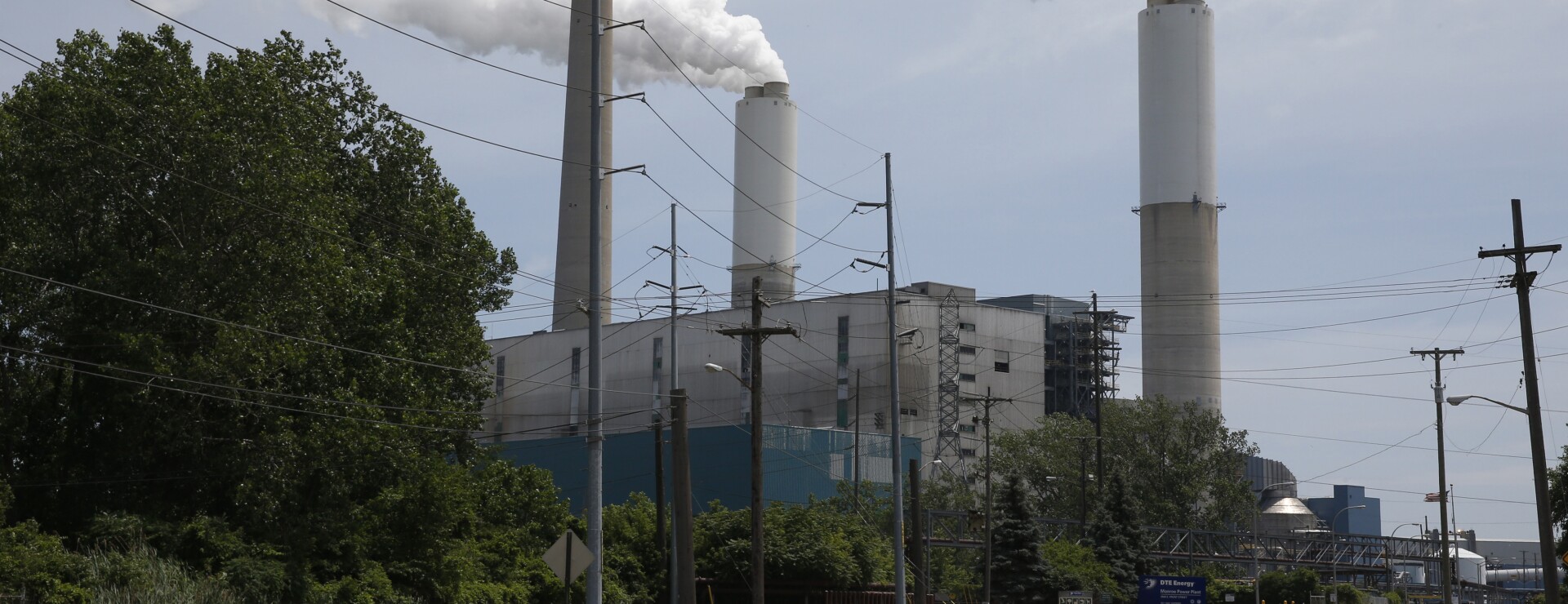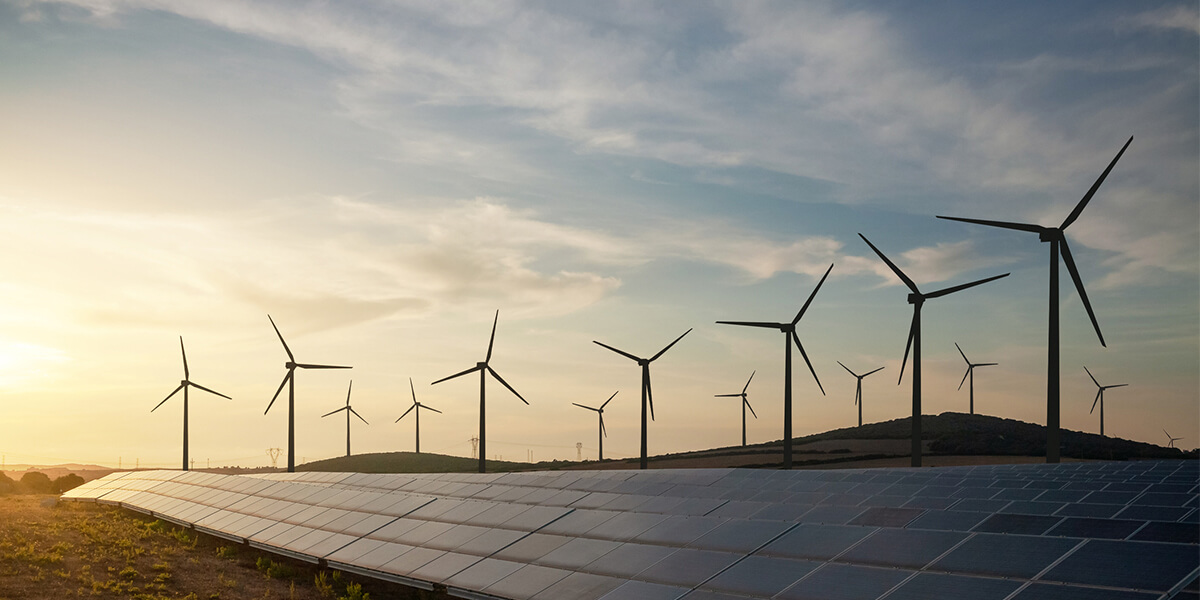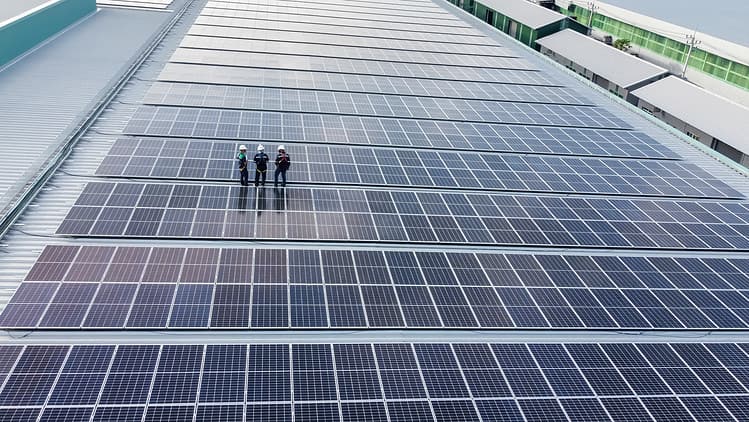
The Biden administration’s long-awaited power plant rule treads carefully over thorny legal precedent, but still faces challenges over whether its core technology strategy is feasible or cost prohibitive.
The Environmental Protection Agency released its proposal this month to stem greenhouse gas emissions from fossil fuels, the latest standards crafted to reduce climate pollution from a source that trails only the transportation sector in carbon output.
But the new standards’ carbon capture and hydrogen technology strategies are a sticking point in the rule’s progress, both legally and practically, according to experts and attorneys watching the rule.
“The requirement that coal plants that are still online as of 2040 have to have carbon capture technology would be the starting point for any challenge to this rule,” Beverage and Diamond principal Eric Christensen said. “The hydrogen firing part of it may be even more problematic.”
State officials and industry have already begun lambasting the rule for its reliance on what they say is an unfeasible technology plan. Looking ahead to the anticipated wave of coal plant closures by 2040, some critics claim it falls directly into the same pitfalls as the Clean Power Plan that was previously stalled in courts.
Groups aiming to halt the rule in court will likely wait to file complaints until after its finalization. Even so, legal observers say challengers will argue that carbon capture and hydrogen aren’t adequately demonstrated as the best systems of emission reduction, as required under the Clean Air Act.
That technology strategy “is the core of the rule,” Christensen said, “and I think probably the largest weakness as well.”
Stick and Carrot
The power plant rule doesn’t mandate any technology. Still, carbon capture is likely the only way for coal-fired power plants to hit the agency’s 90% emissions reductions by 2030.
Larger gas units would have to employ carbon capture technology to trap 90% of their emissions by 2035 or use cleaner-burning hydrogen instead.
The proposal is bolstered by a broad government program to tackle planet-warming emissions through carbon capture technology, according to Aaron Lang, senior associate at Foley Hoag LLP. “I think the core of it is the bipartisan infrastructure law and Inflation Reduction Act.”
Congress provided $12 billion in backing for carbon capture and hydrogen technologies in the 2021 infrastructure package and also boosted Section 45Q tax credits for each ton of emissions captured and stored under the 2022 climate law.
But incentives alone can only do so much, and the EPA’s regulation would “definitely be complementary” to tax credits because mandatory emissions cuts would reduce risks for taking on such projects, said Ben Longstreth, global director for carbon capture for the Clean Air Task Force.
“The regulatory requirement is something that is going to help drive action and I think that’s good for the whole project of decarbonization, including making sure that we learn how to do carbon capture on coal and then bring the costs down,” Longstreth said. “The synergy of these standards and the incentives can help us do that.”
Costs, however, remain a concern even with the incentives, said Jessie Stolark, executive director of the Carbon Capture Coalition.
The $85 per ton incentive power plants would get for capturing and storing each ton—or even the $180 a ton for technologies directly capturing carbon from the air—weren’t immediately indexed for inflation, Stolark said.
“Unfortunately, the 45Q enhancements were not pegged to inflation until 2026,” Stolark said. “So the value of the credit is already eroding,” which could put additional constraints on the financial viability of carbon capture projects.
High Demand, Supply Constraints
Natural gas turbines continue to blend higher portions of hydrogen—another cornerstone technology in the proposal—and are on a path to deployment, industry supporters said.
Siemens Energy expects 100% hydrogen-powered turbines to be viable by 2030. General Electric received Energy Department funding last year to test hydrogen in its turbine, which the company said accelerates its efforts to reach 100% hydrogen by 2030.
The feasibility problem is on the supply side: Uncertainty over just how much hydrogen will be produced, and how it will be delivered via pipelines, complicates the math driving power plant owners’ near-term decisions, Siemens and others said.
Environmental groups and some Senate Democrats want to hold hydrogen production to clean energy standards. Industry groups say that will raise costs and lead to delays in scaling up hydrogen production, and instead call for using fossil fuels to produce hydrogen.
Power plant operators are already beginning to use turbines that allow for some hydrogen blending, said Todd Snitchler, president and CEO of the Electric Power Supply Association. But the costs of retooling plants and upgrading turbines are difficult to measure without the widespread availability of hydrogen and pipelines to deliver it.
“The pace and cost of this kind of fleet turnover is critical and can’t be assumed away without risking system reliability which is—and must be—priority one for the system operators and stakeholders,” Snitchler said.
EPA Discretion
On the other hand, the EPA rule could help make the case for hydrogen transition to happen quicker, said Sasha Mackler, director of the energy program at the Bipartisan Policy Center.
The proposal comes as the Energy Department plans to dole out $7 billion for regional hydrogen hubs to demonstrate production, transportation, and consumption across a variety of uses.
With the tax credit and hubs, “you start to see a full marketplace come together for production and use that could be pretty powerful, and I think the EPA rules can help to support the business model for something like that coming forward,” Mackler said.
The EPA may be banking on the Clean Air Act’s technology-forcing nature—the idea that regulation should spur technological advancement and innovation—to make an argument for its definition of “adequately demonstrated,” according to Christensen.
“It’s a reasonable conclusion for them to say, by the time this is needed, the technology will have matured and the infrastructure will have been built out to support what’s needed to comply with the rule,” Christensen said.
And according to case law, the agency has already reached the bar necessary to have made that discretionary decision, according to Jennifer Rushlow, dean of the Vermont School for the Environment.
The system can’t be at “a level that’s purely theoretical or experimental,” Rushlow said. “But it need not necessarily be routinely achieved within the industry prior to its adoption.”




